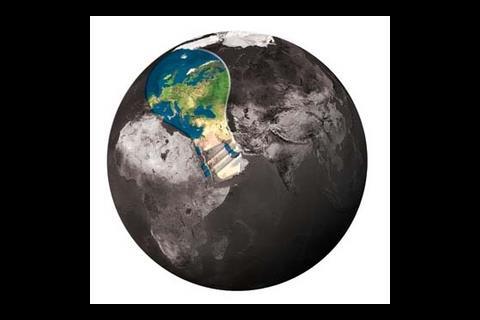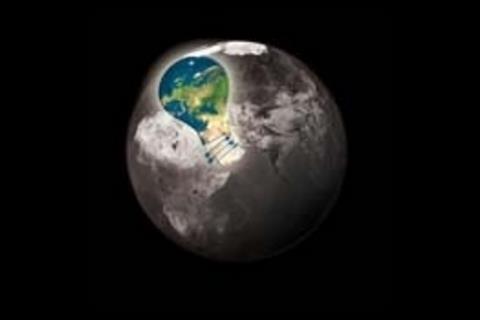The legal responsibility for dealing with discarded lamps and luminaires is about to pass from end-users to producers. Luckily, there are two new recycling schemes that stand ready to help
Few users of lamps and luminaires will argue against recycling and proper disposal of the products at the end of their useful life. It is good health and safety practice, as well as good for the environment. It is also part of the wider issue of corporate social responsibility.
In the past, proper disposal has been a duty of care for the end-user, not a legal obligation. That is about to change. On 1 July, the EU Waste Electrical and Electronic Equipment directive, or WEEE, kicks in. And when it does, the onus for disposal of electrical and electronic goods will be on their producers, whether manufacturers, importers or re-branders (see box on p44). ŌĆ£End-users will no longer have the hassle of disposal contracts,ŌĆØ says Peter Lees, commercial manager at recycling scheme Recolight.
Recolight is an initiative of the major UK lamp manufacturers who, in turn, are members of the European Lamp Companies Federation. It was set up four years ago by the four main UK lamp suppliers ŌĆō Philips, Sylvania, Osram and General Electric ŌĆō to handle their lamp recycling to meet the legal obligations of WEEE. The scheme liaises with customers, end-users, transport companies, recyclers, government and regulators.
A similar scheme, Lumicom, has also been established for the producers of non-household luminaires by the Lighting Industry Federation. This scheme deals with everything in a luminaire, except for the lamps themselves.
Both Recolight and Lumicom are now busy organising and paying for recycling processes. Recolight will finance the costs of collection from designated collection facilities (DCFs) located on the 1,100 UK council rubbish tips or refuse collection stations. It will also help establish further DCFs where needed. ŌĆ£Upwards of 3,000 DCFs will be under RecolightŌĆÖs control by the end of 2007,ŌĆØ Lees estimates.
There is even a facility for lamp collection. End-users can contract that first mile to Recolight, who will set up an on-site collection facility for later transportation to a DCF or a recycler, if needed. However, Recolight will not automatically collect from an end-userŌĆÖs doorstep in order to deliver the waste to a DCF, and the cost of the first leg of the disposal journey will remain the end-userŌĆÖs responsibility.
Where collection facilities are set up on construction sites, these must meet environmental legislation requirements for the protection and confinement of toxic substances.
The site must also contain sufficient lamps to make regular pick-ups feasible. ŌĆ£Fifteen lamps a fortnight will not be worth RecolightŌĆÖs collection effort,ŌĆØ explains Lees.
By law, the producer has to be accredited to a compliance scheme, such as Recolight or Lumicom, to prove it has undertaken its recycling obligations. As with any business, the cost of providing a service is passed up the supply chain, eventually reaching the end-user. Lees would like to see an environmental recycling charge ŌĆ£as a visible feeŌĆØ on the producerŌĆÖs invoice, which he estimates will probably be about 15 p to 25 p per lamp. The buyer, likely to be the wholesaler, then has proof the goods were bought in good faith.
Large-volume end-users will be able to offset this environmental charge against the saving of not having to set up disposal contracts. At the moment, small businesses using only a few lamps can take them to council sites and leave them as part of consumer waste for recycling at no cost to themselves.
Henrietta Lynch, sustainability consultant with ║├╔½Ž╚╔·TV Design Partnership, believes WEEE is good in principle, but she has concerns about the recycling process. A major concern for many end-users will be whether they have sourced their lamps and luminaires from accredited producers so that disposal is paid for. ŌĆ£WeŌĆÖll probably see a clause in a lot of contracts where the end-user will want equipment to be sourced from accredited producers,ŌĆØ she says. ŌĆ£This could be a headache for many facilities managers if they are caught recycling non-accredited lamps.ŌĆØ
Lees says the scenario of non-accredited lamps being recycled is unlikely. ŌĆ£In reality, 85% of lamps used in the UK come from the big four,ŌĆØ he says. Recolight and authorised recyclers of lamps will be sampling batches from skips that arrive to be recycled. There will be a list of brands that are bona fide products to be recycled because their producers have signed compliance agreements.
Lees expects the Environment Agency and the contracted recycler will spare no effort to trace where illegal goods are coming from. Under current rules, fines can be up to ┬Ż2,500 per conviction. ŌĆ£But I suspect isolated cases will get a warning letter and prosecutions would be only for repeated incidents involving large quantities of product where traceability to source is possible,ŌĆØ he says. LeesŌĆÖ advice to end-users is simple: ŌĆ£Written proof, such as an invoice, for example, showing that recycling fees have been paid, is best.ŌĆØ
Ashley Bateson, principal of the sustainability group at building services consultants Hoare Lea, believes WEEE is a good initiative. For too long, UK landfill costs have been low, and this should force end-users to think again. He believes the cost per lamp will be minuscule compared with its overall cost. ŌĆ£I donŌĆÖt think there will be a black market in lamps that are not [WEEE] accredited,ŌĆØ he says. ŌĆ£Reputable firms will always buy from reputable producers under the scheme.ŌĆØ
For luminaires, demolition and strip-out contractors must be WEEE-ready by July, says Ernest Magog, chief executive of Lumicom and immediate past director of the Lighting Industry Federation. It will be a big step forward from the current situation. ŌĆ£At the moment, to be honest, weŌĆÖre not sure exactly what happens to the waste,ŌĆØ he says.
It is certain that contractors will pass on the additional costs of WEEE compliance schemes. Magog expects Lumicom to charge members a flat rate of ┬Ż1 for disposal per lamp unit, but it is too early to give definite costs. He wants the costs to be much lower, but this will only be possible when there are more data on storage and treatment costs, as well as the costs to dispose of any hazardous waste.
Although fewer than 30 of the Lighting Industry FederationŌĆÖs members are currently signed up to Lumicom, the other 320 UK producers will almost certainly have to do so unless they want to go it alone and pay their own costs, says Magog. Other lamp and luminaire compliance organisations have until 1 July to set up alternative schemes.
The Environment Agency expects the total number of recycling schemes to reach about 30 for all electrical and electronic goods. But at the moment, Recolight and Lumicom are the only answer to WEEE in the lighting world. ŌĆ£ItŌĆÖs a headache for producers,ŌĆØ says Magog. ŌĆ£So why not let us take that headache away?ŌĆØ
More information: www.recolight.co.uk; www.lumicom.co.uk
What is the WEEE directive?
WEEE is designed to encourage waste collection, its treatment and, if possible, reuse, and to ensure environmentally sound disposal instead of landfill. The UK and Italy are the final EU countries to implement WEEE, one of several EU environmental directives to implement the principle of ŌĆ£extended producer responsibilityŌĆØ. In other words, producers take responsibility for the environmental impact of their products, especially when their products become waste.
A producer is anyone who:
- Manufactures and sells electrical and electronic equipment under their own brand
- Resells, under their own brand, equipment produced by other suppliers
- Imports electrical and electronic equipment on a professional basis into an EU member state.
Producers will have to pay for treatment of waste, of which commercial lighting is only one type. Other waste includes large and small household appliances, IT and telecommunications equipment, consumer equipment such as television sets, tools, toys, leisure and sports equipment, medical devices, monitoring and control instrumentation, and automatic dispensers such as vending and ATM machines.
The waste from commercial light producers is all components, sub-assemblies and consumables that are part of the product at the time of discarding. In particular, lamp waste is:
- Fluorescent lamps, straight and compact
- High-intensity discharge lamps, including pressure sodium lamps and metal halide lamps
- Low-pressure sodium lamps.
Luminaire waste includes all other lighting or equipment for spreading or controlling light, with the exception of filament bulbs. It must be ŌĆ£separately collectedŌĆØ: stored and transported separately from any other waste materials, and not mixed with refuse or other contaminants.
Source
║├╔½Ž╚╔·TV Sustainable Design






















